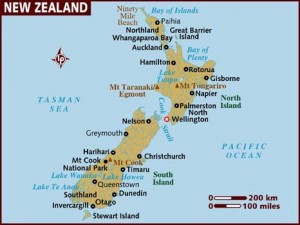 A 6.3 magnitude earthquake hit the South Island of New Zealand in the early afternoon, local time.
A 6.3 magnitude earthquake hit the South Island of New Zealand in the early afternoon, local time.
Ideally, you will have an established and practiced emergency plan in place that you can follow. If you do, your phones are ringing and your emails are zipping across the world as you read this, and you should feel confident in your ability to handle this crisis.
If you don’t have a plan in place, here are some tips to consider during this crisis (and please note, this is NOT a comprehensive list – it is a quick set of items to consider during this difficult time):
1) Swiftly determine which of your students are on programs in New Zealand or had travel plans to New Zealand during this time. This also may include students and faculty who are abroad on volunteer/intership programs, professional development, teaching abroad, spring break trips or are conducting research. You will, hopefully, have a database that you can check from home or the office, to see if you have students there. You will need to reach out to other departments, including the international student and scholar staff, to determine who may be “flying under the radar.”
Assuming you do have students/faculty in New Zealand, you will need to consider the following:
2) If these students/faculty are in New Zealand through partnerships, exchanges or 3rd party providers, you should immediately reach out to your contacts there. Several already have information available on line. Check their home pages if you cannot reach them by phone. Note that email and phone access may not be available at this time in some parts of New Zealand, so be sure to reach out to colleagues in more than one location as they may have access to information in another region of the world. (For example, a database might be accessible from the US office of your partner in New Zealand.)
3) Contact your senior administration and public relations teams. Without having an emergency plan in place ahead of time, you will work your way through with less guidance and more spontaneity, but do your best if your campus plan has not been worked through yet.
4) Your home web page should include information about the earthquake and how to contact a staff member with queries.
5) Reach out to the State Department emergency number if you cannot reach your partners, faculty and students abroad. If you have non-US citizens on your programs, reach out to those embassies on their behalf. Have your roster of passport numbers ready!
6) Contact your emergency insurance provider. Have copies of the policy on hand and links to the policy to share with your campus leadership as well as family of any injured students/faculty.
7) Locate your emergency contact forms and notify emergency contacts with updates. Proactively notify contacts when everyone is fine too – don’t just reach out with scary news. Hopefully, you will have collected emergency information regarding your faculty too.
8 ) Have your campus’ mental health team on call. For faculty and their families, have your EAP service information available.
9) If your faculty are injured abroad and were on university time, they should complete worker’s compensation paperwork with Human Resources (or someone should do so on their behalf.)
10) Proactively communicate with your campus at home via email – let them know you are on top of this issue.
11) When things settle down, remember to thank your staff who are working 24/7 to handle this crisis. They may need a day off. Understand how stressful this experience is for those running interference and reward them with a day off when they need it. Remind them of your campus EAP program also.
12) Contact your senior administration about forming an emergency action plan committee. If this didn’t illustrate how much one is needed, I’m not sure WHAT will.
Melibee Global is thinking of those impacted by this quake and is sending healing thoughts to our colleagues and friends abroad. If we can be of assistance in disseminating information, please feel free to email us at [email protected]
